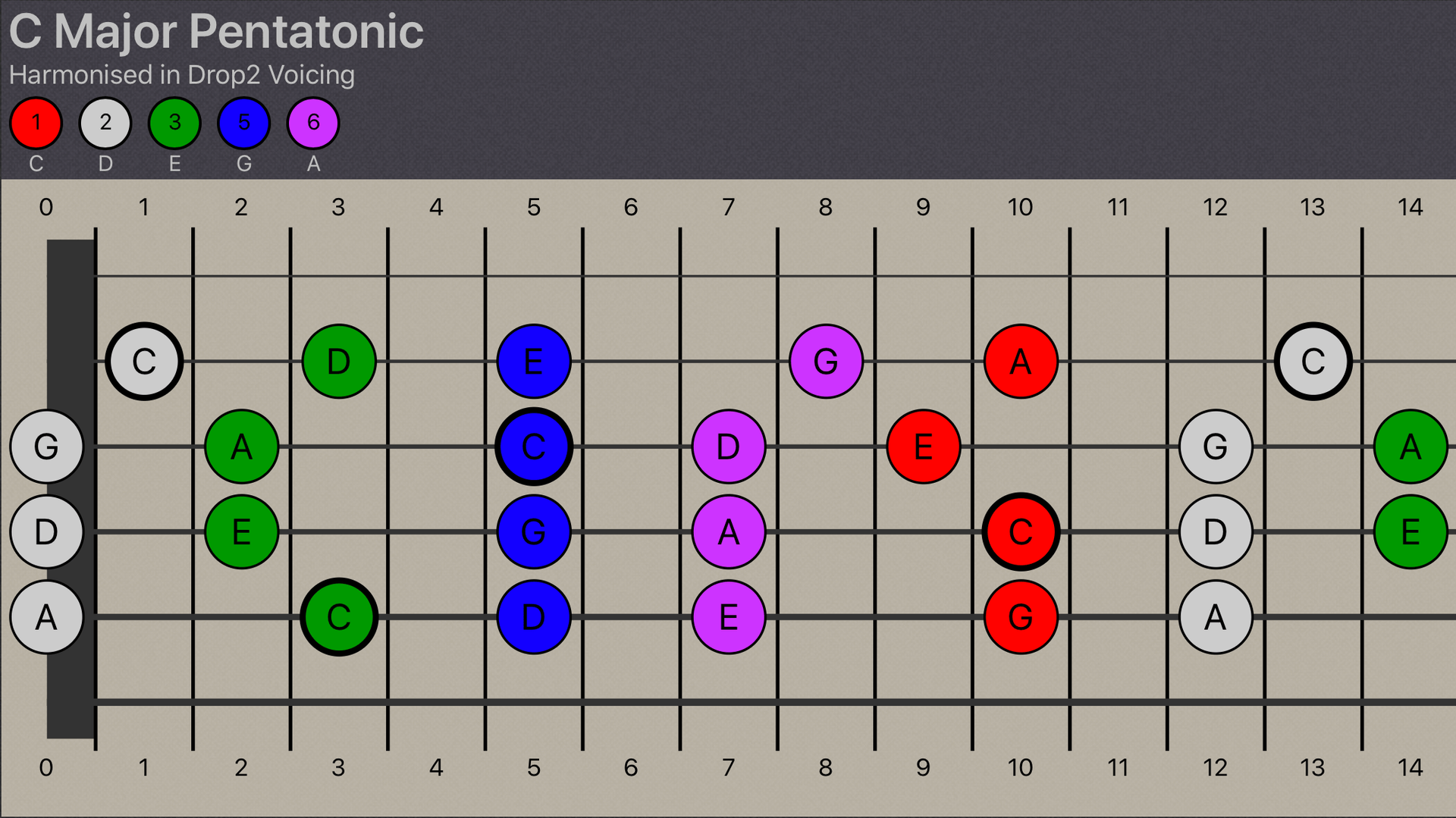The first thing many people will notice about the diagrams is that the circles are color-coded. Yet it isn’t immediately clear what the colours imply. Why colour? To understand the color scheme requires some understanding of the relationship between Equal-Temperament and Diatonic scales.
Most western instruments, the guitar included, use the same type of tuning system, known as Equal-Temperament. This system divides each Octave into twelve equal sections. This is somewhat confusing because the prefix Oct suggests that it’s divided into eight. This is an etymological relic derived from diatonic scales.
Before equal-temperament, musical instruments would have to be tuned, designed, and constructed to a specific set of notes. However, this made transposition to different keys difficult, if not impossible. Many instruments wouldn’t have sounded in tune when played alongside each other.
Equal-temperament was the tuning system that solved this problem, culminating in the invention of the piano, the guitar, and many other instruments of all shapes and sizes.
The Chromatic Scale
On piano, there are twelve keys in each octave, seven white, and five black. All of these keys, played sequentially, one after another, creates a chromatic scale. All twelve of the possible types of notes. The image underneath shows how this looks on sheet music and tablature. The notes with the sharps (#) are black keys.
The Major Scale
Each of the white keys, played sequentially, one after another, make up a C Major Scale. The Major scale is a type of diatonic scale. The historical evidence of humans using diatonic scales goes back to ancient times and is quite a mysterious subject. Notice how there are no sharps or flats in the music notated below.
If the starting note is C, then the resulting diatonic scale is known as the C Major scale. Starting on the A note would result in an A minor scale. Starting on any of the other five white keys, D, E, F, G, and B produces a different type of diatonic scale. (These scales are commonly referred to in music theory as modes. A subject beyond the scope of this guide.)
Why Colour ? Transposition
The black keys provided by equal-temperament make it is possible to transpose scales into other keys. For instance, C Major to A Major or A minor to C minor.
They also enable entirely different types of diatonic scales to the ones that fall naturally on the white keys alone. The sheet music below shows which black keys are needed to make these transpositions. The notes with a # symbol indicate black keys.
Diatonicism
Each diatonic scale contains seven different notes, and the eighth note is when the Octave is complete. The eighth note is the same type of note the scale started on but at a pitch an octave higher.
In the physical medium the frequency in Hz has doubled. – aside
These subjects are ubiquitous in modern music theory. For example, the stave on sheet music is a visual representation of the diatonic Major and Minor scales. Terminology describing groups of notes as chords and or progressions are also inextricably and intrinsically linked to diatonic harmony. As explained earlier, the. keys of a piano are another example.
Having a deep understanding of all these musical terms is not essential to using Fretharmony. However it helps to explain why colour is useful medium for encoding colour into fretboard diagrams. The next article is going to explain how these subjects relate to how Fretharmony uses color.





